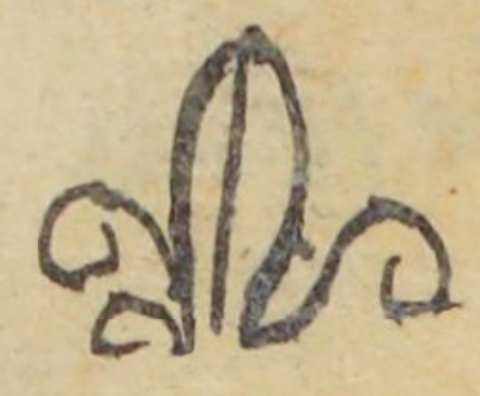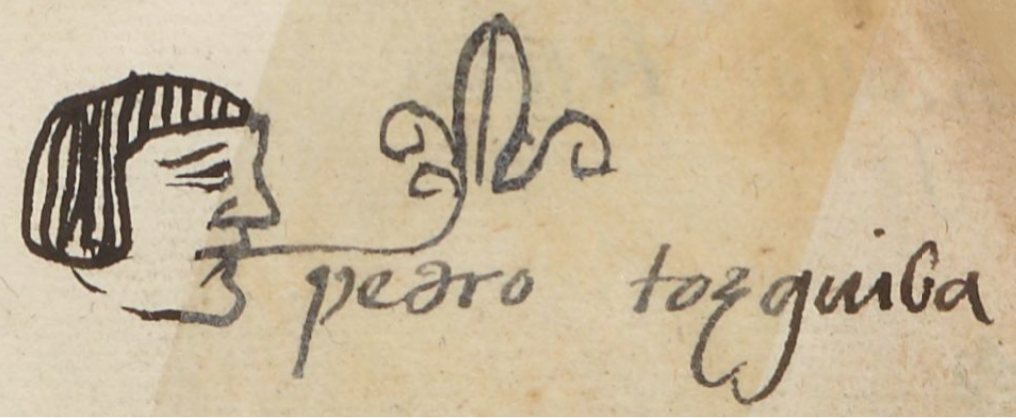Tozquihua (MH492r)
This black-line drawing of the simplex glyph for the personal name Tozquihua (literally, "He Has a Voice," so perhaps "He Can Sing") is attested here as a man's name. The glyph has two predominant elements. One is an upright feather that probably pertains to a yellow bird, given the name (toztli). Around the feather are three simple speech scrolls, seemingly referring to an agreeable sound (nahuatl), and possibly providing the phonetic syllable -hua (possession) part of the name. But the scrolls could also refer to voice, tozquitl, given that the meaning of the name relates to someone having a good singing voice.
Stephanie Wood
Feathers found in the Matrícula de Huexotzinco are often associated with the toztli, even though the glyphs are usually only black-line drawings with no yellow paint. Tozquihua was also the name of a Chalcan lord, so it is possible that this person was named for him.
Stephanie Wood
1560
Xitlali Torres
song, sing, cantar, canción, voz, plumas, nombres famosos, nombres de hombres

Tozquihua, someone with a singing voice, a rulerly name also given to commoners, https://nahuatl.wired-humanities.org/content/tozquihua
tozqui(tl), throat, voice, https://nahuatl.wired-humanities.org/content/tozquitl
toz(tli), a yellow bird, https://nahuatl.wired-humanities.org/content/toztli
-hua (suffix of singular possession), https://nahuatl.wired-humanities.org/content/hua
nahua(tl), speech, or an agreeable sound,https://nahuatl.wired-humanities.org/content/nahuatl
Poseedor de una Voz, o El Que Canta
Stephanie Wood
Matrícula de Huexotzinco, folio 492r, World Digital Library, https://www.loc.gov/resource/gdcwdl.wdl_15282/?sp=63&st=image.
This manuscript is hosted by the Library of Congress and the World Digital Library; used here with the Creative Commons, “Attribution-NonCommercial-ShareAlike 3.0 License” (CC-BY-NC-SAq 3.0).








